Ever wondered what makes your nails strong and shiny? It’s their special makeup. Your nails are more than just pretty; they’re complex structures.
Human nails are mostly keratin, the same as in your hair and skin. This protein makes nails tough yet flexible. The nail structure is amazing, protecting your fingertips and helping with fine motor skills.
The part of your nail you see, called the nail plate, is dead cells. But these cells are full of keratin, making a strong layer. Your nails are about half a millimeter thick and stick well to the nail bed.
Nail composition isn’t just keratin. They also have water, lipids, and minerals. These work together for strength and flexibility. Growth and health depend on blood flow, nutrition, and your overall health.
Knowing about nail composition helps you care for them better. By understanding what they’re made of, you can choose the right nail care products. Healthy nails show your overall health, so treat them well.
Key Takeaways
- Nails are primarily composed of keratin, a tough protein
- The visible nail plate consists of dead, keratin-filled cells
- Nails contain small amounts of water, lipids, and minerals
- Nail health reflects overall body health
- Understanding nail composition aids in proper nail care
The Basic Structure of Human Nails
Knowing about nail anatomy is vital for keeping your nails healthy. Your nails have several parts, each important for growth and function.
Nail Plate: The Visible Part
The nail plate is the hard, outer part of your nail. It’s made of keratin, a protein also in hair and skin. It has three layers and grows mainly from the base.
Nail Matrix: The Growth Center
The nail matrix is where your nails start growing. It’s at the nail’s base and makes new keratin cells. This area is responsible for 80% of fingernail growth.
Nail Bed: The Foundation
The nail bed is the skin under your nail plate. It has blood vessels, nerves, and melanocytes. These help your nails grow and look good. The nail bed gets most of its blood from the superficial palmar arch.
Cuticle and Eponychium: Protective Barriers
The cuticle and eponychium protect your nail’s base. They keep infections away and help your nails stay healthy. By 5 months in the womb, your nails are already covered by a protective seal.
| Nail Component | Function | Interesting Fact |
|---|---|---|
| Nail Plate | Provides protection | Contains 7-12% water and 1% lipid |
| Nail Matrix | Produces new nail cells | Responsible for 80% of nail growth |
| Nail Bed | Supports nail growth | Contains melanocytes for nail color |
| Cuticle | Protects against infections | Forms at 5 months gestation |
What Are Human Nails Made Of?

Your nails are made of a complex mix of materials. The nail plate, the part you see, is mostly keratin. This protein makes your nails strong and flexible. Keratin makes up about 80% of your nail.
Nail proteins are key to keeping your nails healthy. Besides keratin, your nails have other proteins that help their structure. These proteins make your nail plate strong yet flexible.
Minerals are also vital in your nails. Calcium, zinc, and iron are some minerals found in nails. They help strengthen your nails and keep them healthy. A study by Nowak B. in 1996 found minerals like sodium, calcium, and potassium in human nails.
Water is also in your nails, making up 10-30% of their makeup. This moisture keeps your nails flexible. A 2007 study by Gunt HB and colleagues looked into water in the nail plate. It showed how important it is for nail health.
Knowing what your nails are made of is key to keeping them healthy. Eating right and taking care of your nails helps. This ensures they stay strong and look good.
The Role of Keratin in Nail Composition
Keratin is key to your nails’ strength and shape. It’s the main protein in nails. Your nails are made of dead keratinocytes, making them hard yet flexible.
Types of Keratin in Nails
Nail keratin has different types, each important for nail structure. The main types are:
- Alpha-keratin: Forms strong, flexible fibers
- Beta-keratin: Adds strength and rigidity
How Keratin Contributes to Nail Strength
Keratin makes nails strong by creating cross-linked structures. These structures make nails tough and help keep them intact. The nails’ durability comes from disulfide bonds in keratin.
Comparison of Nail Keratin to Hair and Skin Keratin
Keratin is in nails, hair, and skin, but they’re different:
| Feature | Nail Keratin | Hair Keratin | Skin Keratin |
|---|---|---|---|
| Rigidity | High | Moderate | Low |
| Water Content | 10-30% | 10-13% | 10-20% |
| Growth Rate | 3.5 mm/month (fingers) | 1 cm/month | Continuous renewal |
| Primary Function | Protection, tool | Protection, insulation | Barrier, sensation |
Knowing about nail keratin helps us understand why nails are stronger than hair or skin. This info helps us keep our nails healthy and strong with the right care and nutrition.
Nail Growth and Development
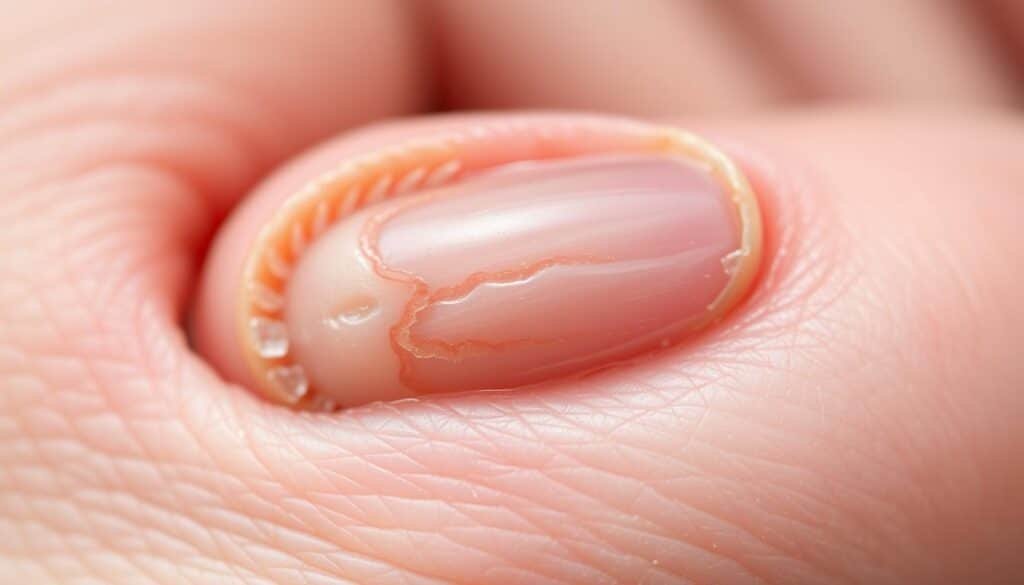
Your nails grow steadily, with new cells pushing older ones forward. This process results in a nail growth rate of about 3-4 mm per month. Interestingly, your fingernails grow faster than your toenails. A complete nail plate takes around 6 months to grow out fully.
Several factors influence nail development. Longer digits, summer months, and being under 30 years old can speed up growth. Surprisingly, nail biters often have faster-growing nails too. Your overall nail health plays a crucial role in this process.
As you age, you might notice changes in your nails. Vertical ridges become more prominent, and the growth rate may slow down. These are normal age-related changes and usually don’t indicate health issues.
- Keep nails dry and clean
- Practice good nail hygiene
- Use moisturizer
- Apply a nail hardener if needed
- Seek professional help for persistent issues
Biotin, a nutritional supplement, may help strengthen weak or brittle nails. Remember, your diet and overall health significantly impact nail growth and strength. Proper nutrition and care can promote healthy nail development and maintain optimal nail health.
Factors Affecting Nail Composition and Health
Your nail health is influenced by many factors. Knowing these can help you keep your nails strong and healthy. Let’s look at the main elements that affect nail composition and care.
Nutritional Influences on Nail Composition
What you eat is key to nail health. Eating a balanced diet with proteins, vitamins, and minerals is crucial. Iron deficiency can cause spoon-shaped nails, and zinc helps keep nails strong. Calcium and magnesium also play a big role in nail strength.
Environmental Factors Impacting Nail Structure
Your nails face many environmental challenges every day. Harsh chemicals, too much moisture, and physical damage can harm your nails. Long exposure to water or cleaning agents can make nails brittle and break easily.
Genetic Factors in Nail Composition
Your genes influence your nail’s thickness, shape, and growth rate. Some genetic conditions can lead to nail problems or make nails more prone to disorders.
Age-Related Changes in Nail Composition
As you get older, your nails change. They grow slower, and the nail plate gets thinner. Older people often see ridges or discoloration in their nails.
| Factor | Impact on Nail Health | Prevention/Treatment |
|---|---|---|
| Nutrition | Deficiencies can lead to weak, brittle nails | Balanced diet rich in proteins, vitamins, and minerals |
| Environment | Harsh chemicals and moisture can damage nails | Wear gloves, limit exposure to water and chemicals |
| Genetics | Determines nail shape, thickness, and growth rate | Proper nail care tailored to individual needs |
| Age | Slower growth, thinning, increased ridges | Regular moisturizing, gentle nail care |
Understanding these factors helps you take better care of your nails. Regular moisturizing, proper nutrition, and protecting your nails from harsh environments can greatly improve their health. This can also prevent common nail disorders.
Conclusion
Knowing what your nails are made of and how they grow is key to keeping them healthy. Your nails, mostly keratin, grow about 3 mm each month. Fingernails grow faster than toenails, and this rate can change with age, diet, and genetics.
Good nail care is more than just making them look nice. Your nails can show signs of health problems. For example, doctors check nail color to see if you have enough oxygen in your blood. Keeping your nails safe from harsh chemicals is also important.
Even though getting professional nail services is popular, they can be risky. Tools that aren’t properly cleaned can spread infections, and some nail products can be harmful. To keep your nails healthy, eat well, be gentle with them, and moisturize regularly. Taking care of your nails helps your body stay healthy too.
FAQ
What are human nails made of?
What is the structure of human nails?
What is the composition of human nails?
What types of keratin are found in nails?
How do nails grow and develop?
What factors affect nail composition and health?
Why is understanding nail composition and structure important?
Source Links
- What Are Nails Made Of? And 18 Other Facts About Your Nails – https://www.healthline.com/health/beauty-skin-care/what-are-nails-made-of
- Nail (anatomy) – https://en.wikipedia.org/wiki/Nail_(anatomy)
- In brief: Structure of the nails – InformedHealth.org – https://www.ncbi.nlm.nih.gov/books/NBK513133/
- Anatomy, Shoulder and Upper Limb, Nails – StatPearls – https://www.ncbi.nlm.nih.gov/books/NBK534769/
- Structure and Growth of Fingernails and Toenails – https://www.verywellhealth.com/nail-anatomy-growth-structure-and-more-1068848
- Nail Anatomy & Terms – https://10freelife.com/pages/nail-anatomy-terms
- Understanding the Formidable Nail Barrier: A Review of the Nail Microstructure, Composition and Diseases – https://www.ncbi.nlm.nih.gov/pmc/articles/PMC5383514/
- Your Nails (for Kids) – https://kidshealth.org/en/kids/your-nails.html
- Fingernail do’s and don’ts – https://www.mayoclinic.org/healthy-lifestyle/adult-health/in-depth/nails/art-20044954
- 13.4: Hair and Nails – https://bio.libretexts.org/Bookshelves/Human_Biology/Human_Biology_(Wakim_and_Grewal)/13:_Integumentary_System/13.4:_Hair_and_Nails
- Why Do We Have Nails? The Important Roles They Play – https://www.healthline.com/health/why-do-we-have-nails
- Sex-related chemical differences in keratin from fingernail plates: a solid-state carbon-13 NMR study – https://pubs.rsc.org/en/content/articlehtml/2017/ra/c7ra03487c
- Overview, Gross Anatomy, Nail Growth – https://emedicine.medscape.com/article/1948841-overview
- 6 Things You Should Be Doing for Healthier Nails – https://www.health.com/nail-anatomy-8431173
- Nail Properties and Bone Health: A Review – https://www.ncbi.nlm.nih.gov/pmc/articles/PMC6023356/
- 10.6 Nails – https://jwu.pressbooks.pub/humanbiology/chapter/12-6-nails/
- Human Hands and Fingernails – microbewiki – https://microbewiki.kenyon.edu/index.php/Human_Hands_and_Fingernails
- Calcium and Silicon Delivery to Artificial and Human Nails from Nail Polish Formulations – https://www.mdpi.com/2079-9284/7/1/15


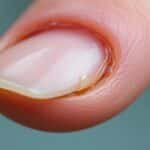
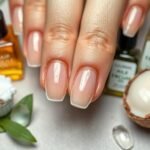
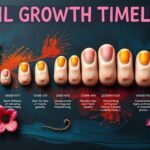

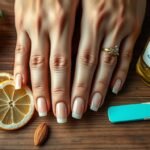
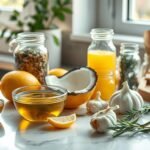
Interesting read, but has anyone ever considered if our nail composition can affect our health or is it just aesthetics? 🤔
Interesting read, but arent nails just evolved claws? Why do we still have them if were not hunting or climbing trees? 🤔
Guys, have you considered if our nails are made of the same stuff as rhino horns? Makes you think, right?
Interesting read, but ever wondered if our nails could regenerate like starfish limbs? What if were just not trying hard enough? #ThoughtsToPonder